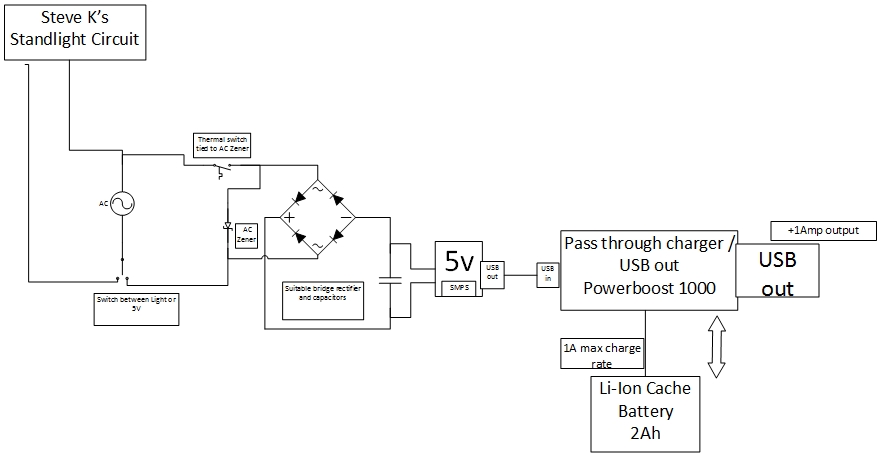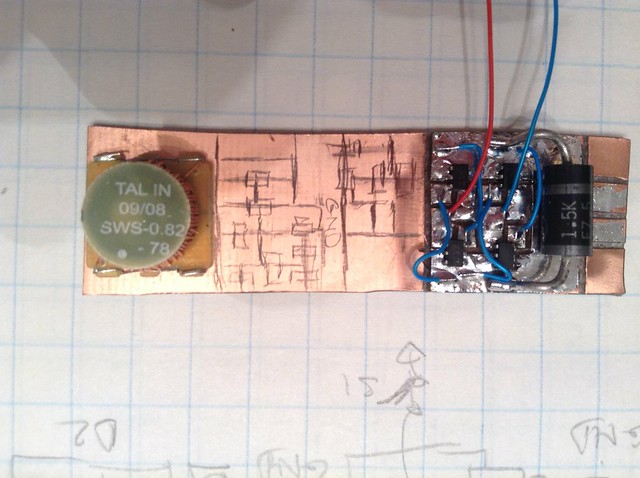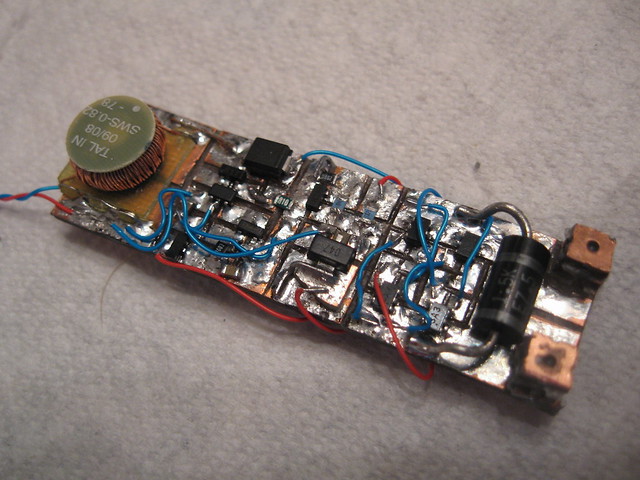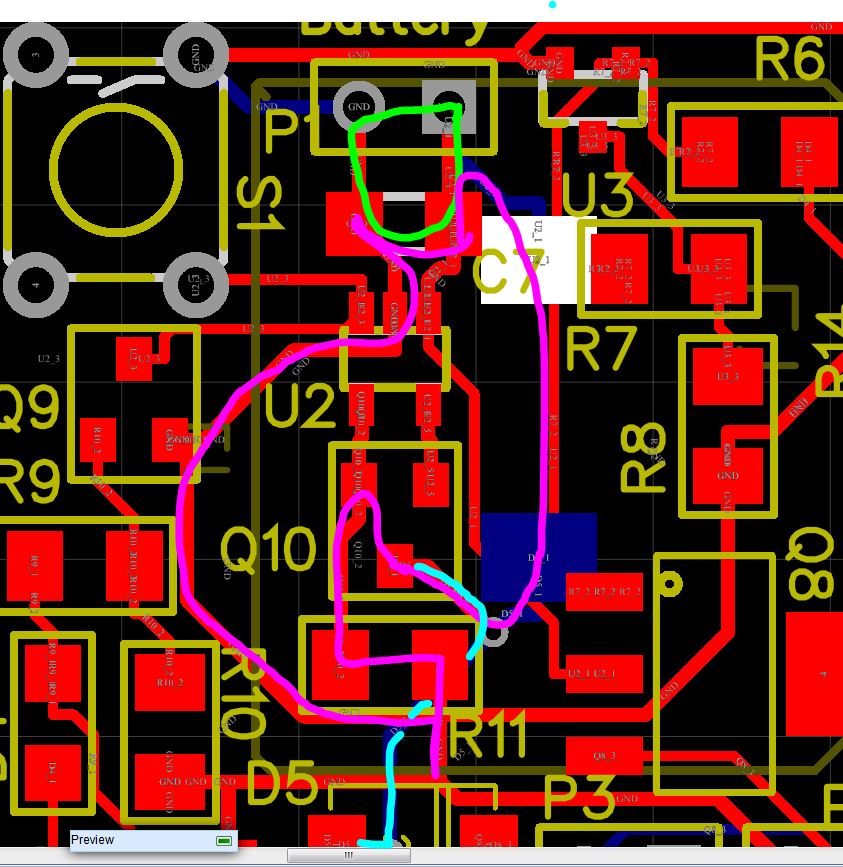Steve K
Flashlight Enthusiast
<...snip...>
What I'd still like is USB charging during the day. I would place a STDP switch in your circuit after Q3 and Q4, removing the connection to U1. Smoothing caps will be added. Then add the 5v system after that. Would that be correct? Is D10 your
disconnecting the rectified power from the light and connecting it to a USB charger seems okay, assuming that some details are addressed.
The mosfets are only rated for 30V (which was okay, because I knew there would always be 0.5A load on it). D10 was added to handle a circuit or soldering malfunction. I didn't size it to handle the dynamo power continuously.. the worst case scenario is that it'll overheat and fail shorted. There won't be any light, but at least no other parts get damaged.
You'll want to consider a bidirectional zener or other circuit that can handle the dynamo power for a continuous period of time. This is probably something you'll want to test and evaluate before committing to it.
edit: don't forget that the mosfet bridge rectifier doesn't block reverse current like a diode bridge rectifier does. This means that you can't put a filter cap on its output. You'll probably want to add a series schottky diode to the bridge's output for this purpose.
Have you had much dealings with USB charging systems? From what I gather, the more you load up a dynamo, the more power you can extract from it. But if I'm just trying to charge a battery, is that enough load? A 1A charge rate would be ok, 2A even better! I'd still want to use that Traco switch mode converter as it can take 30Vin. And if nothing is connected, does your D10 act as over voltage protection?
Thanks again for always helping Steve, its greatly appreciated!
Is this the thread where max power point tracking is discussed?? Well, go review that, and you'll see that both a big load and a small load will result in nearly zero power being extracted from the dynamo. The trick is to find just the right load, and that will be the one that lets you pull the most power from the dynamo. Of course, the dynamo's characteristics change with speed, so the "right load" will also change with speed.
As such, I can't predict how any given USB charger will behave when combined with your dynamo.
Last edited:










